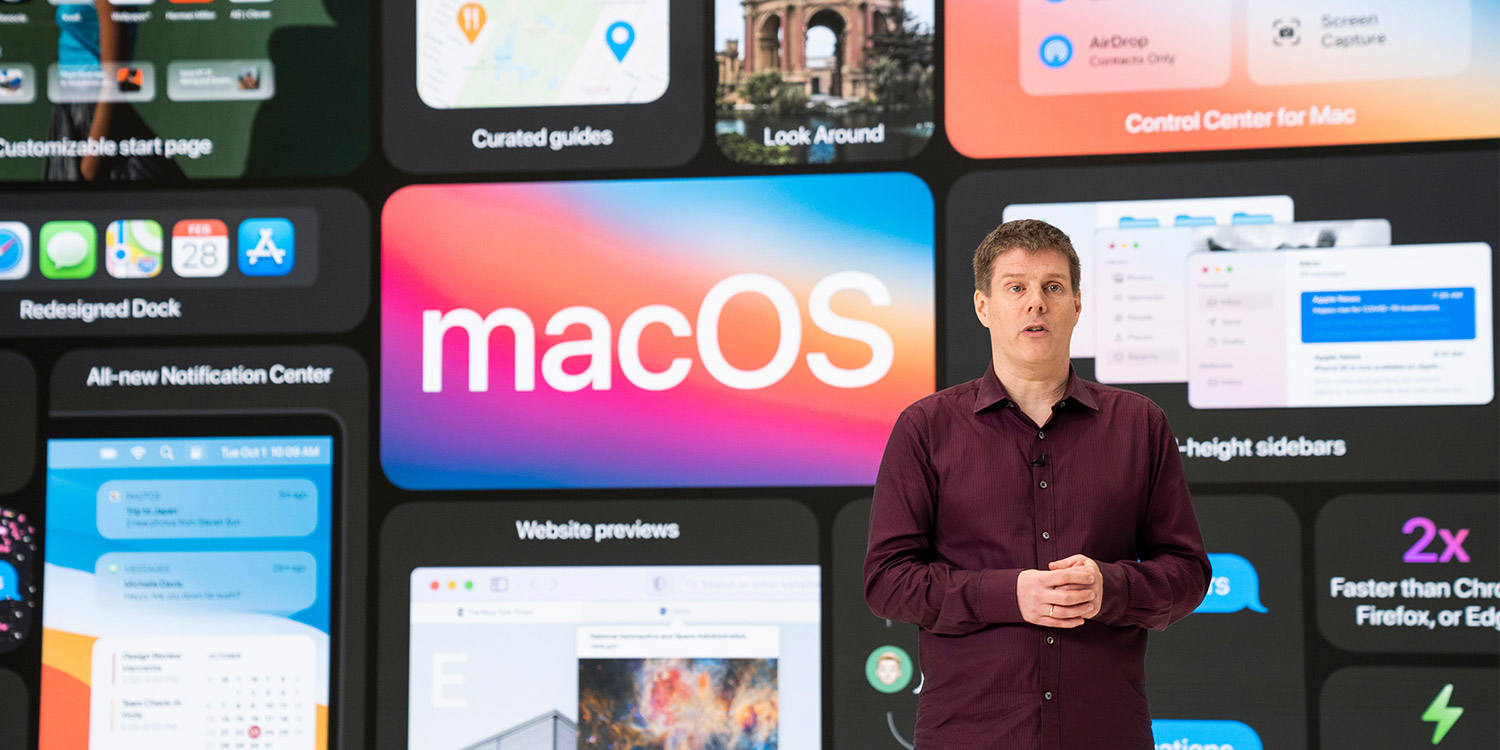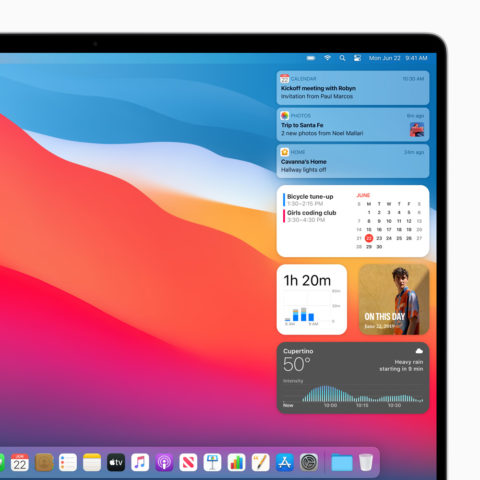At WWDC this week, Apple announced the next iteration of macOS, continuing its recent tradition of naming operating system releases for Californian landmarks. This year, Apple’s marketing team landed on the beaches of Big Sur.
A fresh new look
macOS Big Sur gives the Mac interface a big redesign, bringing many elements in line with the visual identity of iOS. From rounded corners and fresh colors to updated app icons and a new Control Center, across the board everything feels a little more… iPhone.
That’s the case for Mac apps, too. Messages is getting a big update to bring it feature parity with iOS – meaning Memoji creation, GIF sharing, streamlined group messaging, and more coming this Fall.
Safari for Mac is also getting a massive upgrade, promising much faster web browsing, more personalization options, and a renewed focus on privacy.
Apple exec Craig Federighi says “with its modern and clean look, huge improvements to key apps including Safari, Messages, and Maps, and new privacy features, we think everyone is going to love the breakthrough experience that macOS Big Sur offers.”
Big Sur will be available as a free upgrade to the public this Fall.
Silicon valley
Apple also announced it would be ditching Intel processing chips in favor of home-grown Apple silicon. To the everyman, that may sound like boring, unnecessary technical detail. But its effects will be huge and long-lasting.
The company has been using its own world-class chips in iPhone and iPad for years. The A-series of chips is what makes modern Apple kit so powerful and power-efficient, but despite these successes, the company has stuck with Intel as a chip supplier for the Mac range. Until now.
That’s all set to change, as Apple says it will transition its entire Mac lineup to in-house silicon over the next two years. This Mac-sized “system on a chip” will boost performance and improve the Mac’s ability to run pro apps and high-end games. It also reduces reliance on outside suppliers, meaning more control for Apple. No more unexpected launch delays due to Intel running behind schedule.
The iPhone effect
It also means that Mac, iPhone, and iPad, will for the first time share a common system architecture. That will make it much easier for developers to create universal apps that work across all three systems – and its theory it also means existing iPhone and iPad apps will be able to run on the Mac.
So keep an eye out for familiar mobile apps and games to start appearing on the Mac, and perhaps vice versa as development costs are reduced!


